
Both butternut and spaghetti squash are winter varieties of squash with a firm rind and flavorful flesh. While both are low in calories and fat, and can make good additions to a healthy diet, they offer different proportions of nutrients. The flesh of spaghetti squash is very different from butternut squash — you don't want to use them interchangeably in recipes.
Appearance And Texture
Butternut squash is shaped like a bell, generally weighs from 2 to 4 pounds and is up to 1 foot long. The rind is a yellow to tan color, while the inner flesh is orange with a firm texture that softens as it cooks.
Spaghetti squash is a vibrant yellow color and oval in shape. It is a little less than 1 foot long and usually weighs from 2 to 3 pounds. The inner flesh is pale yellow and easily separates into spaghetti-like strands when cooked.
Basic Nutrition Information
Butternut squash contains 82 calories per 1-cup serving, with less than 1 gram of fat and no cholesterol. Spaghetti squash is lower in calories than butternut, with 42 calories per cup. Butternut squash has a nutritional advantage over spaghetti squash when it comes to fiber content. It boasts 6.6 grams of dietary fiber -- 26 percent of your daily value, an intake recommendation -- per serving, compared to spaghetti squash's 2.2 grams. Both types of squash contain almost no protein -- 2 grams per cup of butternut squash and 1 gram per cup of spaghetti squash -- and virtually no fat.
Vitamin and Mineral Content
Butternut squash serves as an excellent source of vitamins, offering 457 percent of your daily value of vitamin A and 52 percent of the vitamin C you need every day. Its rich nutrient content offers several health benefits -- its vitamin A contributes to healthy vision, while vitamin C maintains strong bones and skin. Spaghetti squash is not as high in vitamins as butternut squash, coming in at 9 percent of your daily value of vitamin C and 3 percent of your daily need for vitamin A. Both types of squash provide small amounts of calcium and iron
Preparation
Baking whole spaghetti squash takes about an hour, but if you cut it in half, scoop out the seeds and place it flesh-side down in a pan to bake, it will cook a little more quickly. If you have a pot the cut pieces will fit in, put them in with the flesh side down and add enough water to come halfway up the side of the squash and boil until tender. When spaghetti squash is cooked, draw a fork all the way through several times to separate the strands.
Cooking butternut squash is much simpler than most winter squashes because the rind is thin enough to peel. Quarter the squash and scoop out the seeds from the lower half. Peel the pieces of squash, cut into smaller pieces, then roast, steam, braise or add to a stew. You can also cut the squash in half, scoop out the seeds and bake in the oven.
Related Articles

How to Cook Papaya Pear Squash
How to Grill Chayote Squash

The History of Butternut Squash

How to Cook Buttercup Squash

Differences in Acorn & Butternut Squash

How to Cook a Turban Squash
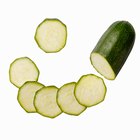
How to Cook Zuccini & Squash in a ...

How to Prepare Peter Pan Squash

Can You Boil Broccoli & Carrots at the ...
How to Cook a Large Hubbard Squash
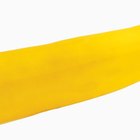
What Is Yellow Zucchini?

Baked Cubed Squash

How to Tell if Baked Spaghetti Squash ...

How to Cook Delicata Squash in the Oven

How to Cook Delicata Squash Cut in Half
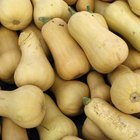
How Many Calories Are in Butternut ...
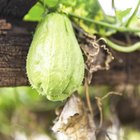
How to Grill Chayote Squash
Calories in Candied Walnuts
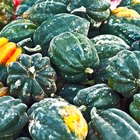
How to Boil Acorn Squash
How to Grill Spaghetti Squash
References
Writer Bio
Since 1997, Maria Christensen has written about business, history, food, culture and travel for diverse publications. She ran her own business writing employee handbooks and business process manuals for small businesses, authored a guidebook to Seattle, and works as an accountant for a software company. Christensen studied communications at the University of Washington and history at Armstrong Atlantic State University.
Photo Credits
Brand X Pictures/Brand X Pictures/Getty Images